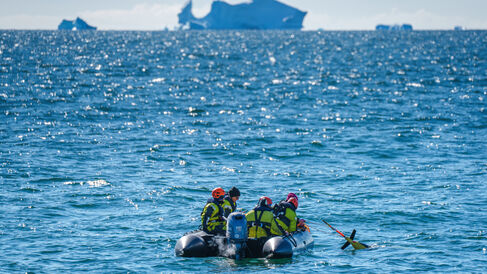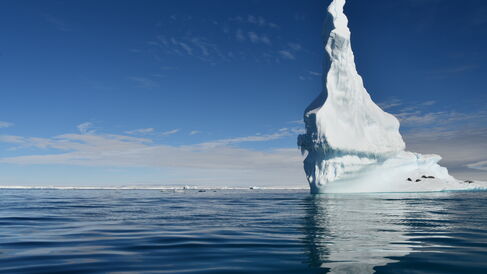
Earlier this year, ICCS Early Career Advanced Fellow Dr Laura Cimoli set off to the Bellingshausen Sea off the coast of Antarctica to study the ocean circulation and the impacts of glacial melting in the region.
As the team was conducting their survey, however, an enormous iceberg calving event caused them to rapidly change course. Iceberg A-84, approximately the size of Chicago, broke away from the King George VI ice shelf, leaving behind exposed seafloor never before explored.
The team had the unique opportunity to investigate the city-sized chasm, an area that would have been impossible to study prior to the calving. The area under floating Antarctic ice shelves is not widely understood; the cruise was the first expedition to use a remotely operated vehicle (ROV) to explore such an ecosystem.

What they found at the site was somewhat surprising; the seabed contained thriving ecosystems of large coral and sponges, supporting an amazingly biodiverse array of life. Check out some of the captured images here.
Though the team had anticipated some marine life beneath the ice sheet, the observed biodiversity was unexpected. Since the area had been cut off from the surface, nutrients that would normally fall from above should not have been able to reach the ecosystem. The exact mechanism for the flow of nutrients to this remote region is not yet fully understood, but the team hypothesises that food must have been carried in via currents flowing underneath the ice shelf.

“The fact that we found long-living species suggests that indeed the lateral transport, which mostly consists of glacial meltwater from George VI ice shelf, could be the source of the nutrients sustaining the thriving life found under the newly exposed ice shelf,” explained Dr Cimoli in an interview with National Geographic.
Now that A-84 has been freed from its ice shelf, Dr Cimoli and her colleagues are interested in how the oceanic circulation in the region will be affected.
Beyond the surprise iceberg incident, the team were also able to make progress on their original goal of gathering data on circulation and glacial melting in the region.
“From the underwater glider deployments, we have clear signals of both the intrusion of warm Circumpolar Deep Water onto the continental shelf, which is the main cause of the accelerated melting rates in West Antarctica, and of the fresh meltwater,” Dr Cimoli explained in an interview with ARIA. This data will allow them to quantify the volume, transport, and mixing of the different water masses.

Interested in learning more about the cruise? Check out these articles from the British Antarctic Survey and Cambridge Research!
